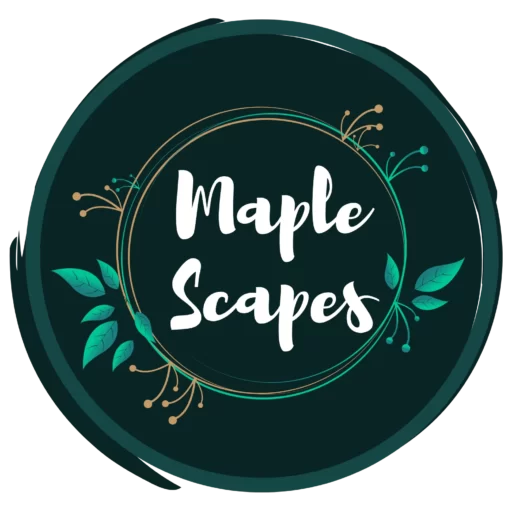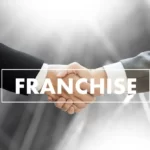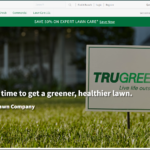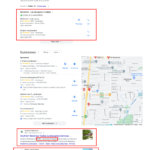Artificial turf in parks, homes, and other public spaces may readily replace natural grass. It’s a synthetic surface created to resemble grass. This article explores its background, varieties, advantages, environmental effects, applications, maintenance requirements, and prices. By examining its aspects, we may conclude whether or not artificial turf is a significant investment.
❓ What is Artificial Turf?
Artificial turf, also known as fake grass, replaces natural grass wherever growing or maintaining the original grass is challenging.
It’s made of various materials, including nylon, polyethylene, polypropylene, etc. It finds its implications in various settings like sports fields and commercial and residential spaces; it’s low maintenance as it doesn’t require constant watering, mowing, weeding or the use of pesticides and fertilizers.
Artificial turf is gaining immense popularity, which would probably continue to soar in future.
🗺️ The backstory of synthetic turfs
In the past, artificial turf was introduced and used in sports fields and playgrounds. Over time, it improved in build quality, texture and experience, pushing it closer to feeling like natural grass. Over the years, improvements and advancements in the design and manufacturing of synthetic turfs resemble a significant step ahead in transforming outdoor surfaces.
🔡 Types of Artificial Turf
Artificial turf has a variety of forms, depending on different materials used in its manufacture and additional customization to suit to various needs of individuals and spaces, which are listed below:-
♻️ Based on turf material
- Nylon turf:
Specially designed for high-traffic areas as it is very resistant and durable.

- Polyethylene turf:
It feels natural and is ideal for residential lawns, giving a feel of natural grass.

- Polypropylene turf:
It’s cost-effective and is used for low-impact areas with less traffic; it can’t be taken under regular use.

- Hybrid turf:
Some artificial turfs blend many materials to provide extra durability. For example, a blend of polyethylene and nylon could be used to achieve a natural feel and add to the strength of turf, making it an ideal choice for both commercial and residential use.

♻️ Based on custom needs
- Pet-friendly turf:
Specially designed for spaces ruled by pets, these turfs are pet friendly with good drainage and are resistant to discoloration due to pet pee.
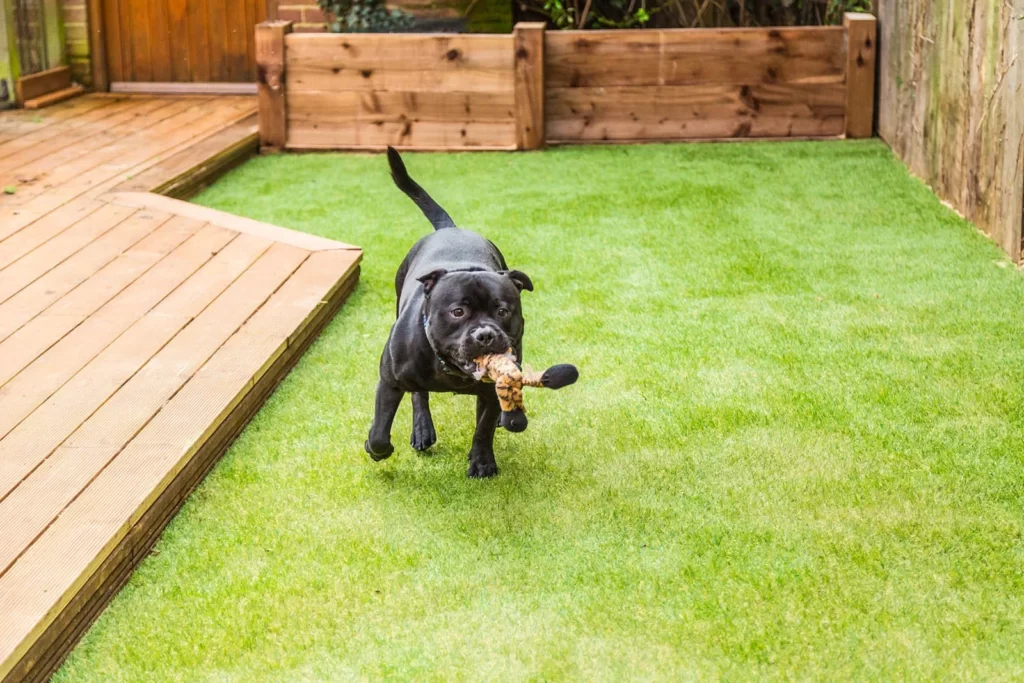
- Putting green turf:
This turf is specially customized to give golf players the feel of natural putting greens.

- Sports turf:
Made for use in areas for sports like football, tennis, golf, and soccer.
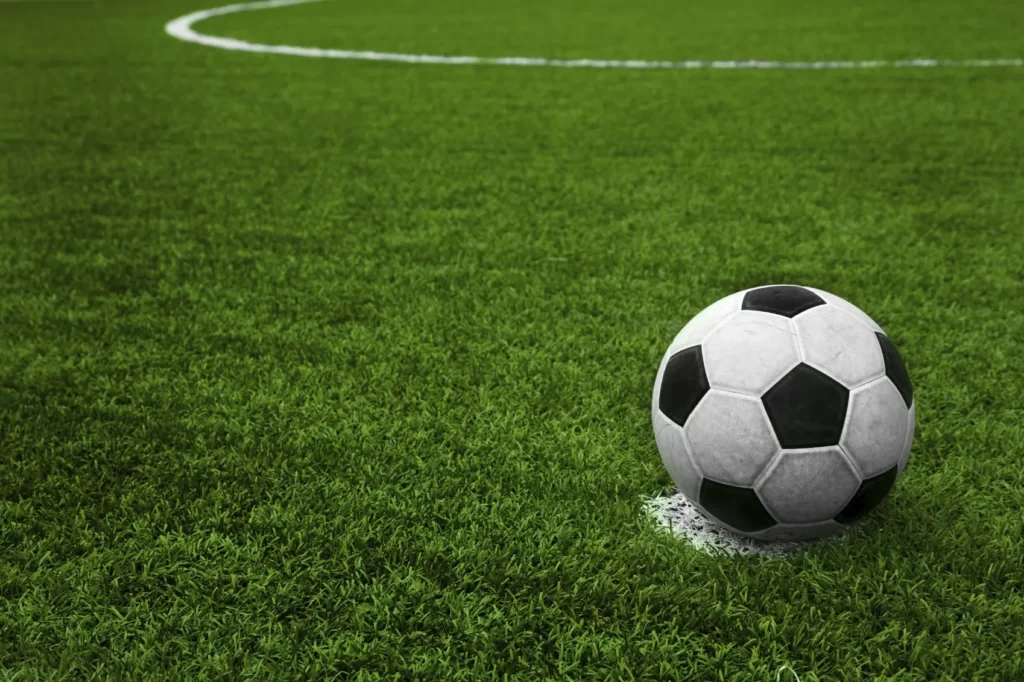
- Landscaping turf:
These turfs are made to mimic natural grass and are used in residential and commercial spaces. They have various shades and textures to suit customers’ demands.

- Roof deck turf:
They are designed for rooftop or terrace gardens; they are light in weight and are well-built with sound drainage systems.

- Commercial turfs:
Designed to handle heavy foot traffic in commercial areas.
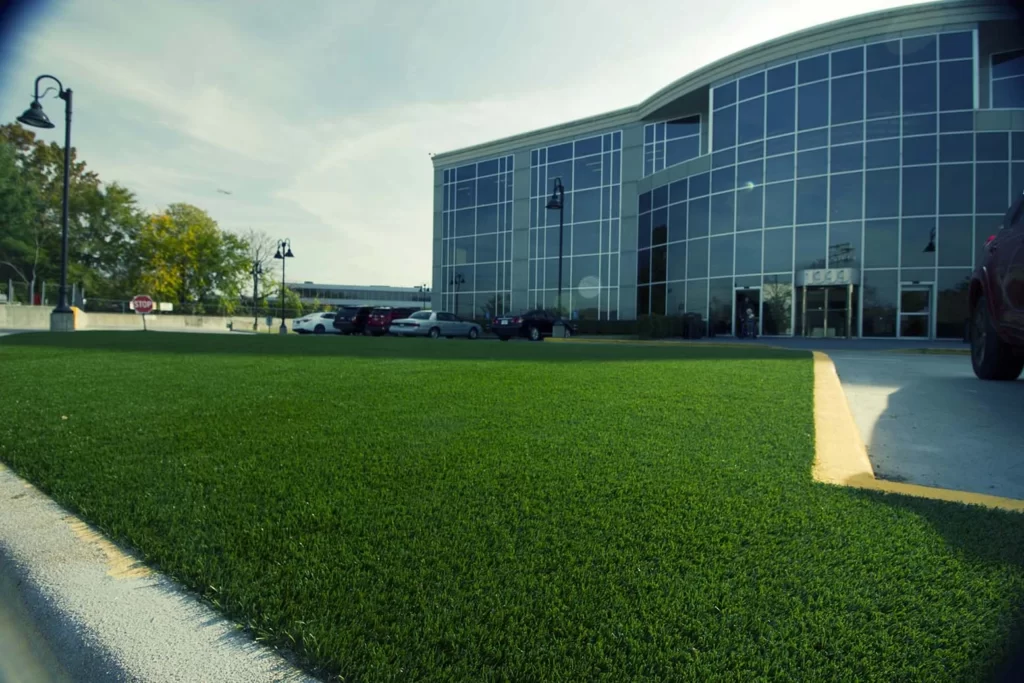
- Indoor turfs:
Designed for indoor spaces like gyms or living rooms.

💰 Estimated cost of installing artificial turf
The cost for synthetic turf installation depends on a few factors like the type of turf you want to use, that is, its choice of material, turf quality, area to be covered with the turf and additional investment for preparation of the area where it is to be laid and the labour costs.
Here is a brief idea encompassing the various cost factors:
| Cost Factor | Remark |
|---|---|
| Turf Quality | Costs would depend on turf quality as high-quality turf involves using advanced technology, thus increasing its price. |
| Turf material | Different types of turf vary in price due to differences in durability, material and strength. |
| Area size | More the area to be covered with turf, the more the Cost |
| Labour cost | Base preparation and turf installation require labour work. Hence it would all be covered under labour costs. |
| Site preparation | Preparing the area by removing debris, weed and levelling it would all contribute to the labour cost. |
| Location | Prices would also vary with the region it is to be installed and the availability of the material. |
| Add-on features | If you opt for optional features like infill materials, drainage systems and customized turf designs, the overall turf installation cost will increase. |
As Cost also depends on the type of turf to be installed, here is an idea of approximate estimated rates, remember they too would vary depending on the quality you desire:-
-> Artificial turfs built with different materials:
| Turf type | Estimated rate per square foot |
|---|---|
| Nylon turf | $4 to $10 approx. |
| Polyethylene Turf | $2 to $8 approx. |
| Polypropylene Turf | $1 to $4 approx. |
-> Custom-made artificial turfs:
| Turf type | Estimated rate per square foot |
|---|---|
| Pet-friendly turf | $3 to $7 approx. |
| Putting green turf | $8 to $20 approx |
| Sports turf | $3 to $10 approx. |
| Landscaping turf | $2 to $5 approx. |
| Roof deck turf | $6 to $12 approx. |
| Commercial turf | $3 to $8 approx. |
| Indoor turfs | $2 to $6 approx. |
🤝 Benefits of Artificial Turf
⬇️ Low Maintenance:
Artificial turf requires the most minor maintenance compared to natural grass lawns as it doesn’t need watering, mowing or using fertilizers; this saves time, energy and money. Hence artificial turf is a one-time investment for Hassle free experience of grass floors.
💪 Durability:
Artificial or synthetic turfs are made using materials which make them durable and highly useful for use in heavy-traffic areas like playgrounds.
🚰 Water Conservation:
As artificial turf doesn’t require watering, it saves a lot on the use of water, thus preserving valuable resources, especially in regions with water shortages.
👨🎤 Appearance:
Artificial turf remains lush green all year without extra effort. It won’t need watering, pesticides or fertilizers ever, thus adding to the aesthetic appeal without a constant toll on the pocket.
🌦️ All-Weather Use:
Artificial turf is used all year round in every weather as it won’t get muddy or dried up in rain or summer, unlike natural grass stretches.
🦾 Versatility:
It can be installed in various places where natural grass might not survive, like in highly shaded areas or areas where many people walk over; natural grasses need help to grow in those areas.
🤧 Reduced Allergens:
As it isn’t natural grass, there won’t be any grass pollen to cause allergy to your friends, family and pets.
🌍 Environmental Considerations
Although artificial turf has many advantages, like no watering, use of pesticides or other chemicals, and no carbon emissions by mowers and other lawn equipment, artificial turf doesn’t require such tools.
But it also has significant environmental impacts, such as producing artificial turf requires energy and petrochemicals, which contributes to harmful environmental emissions.
Synthetic turf absorbs and retains much heat, increasing the surrounding temperature. Also, they have a short lifespan which causes their disposal a more significant challenge. They produce microplastics in the environment upon decomposition, thus adding to plastic pollution.
➿ Use of Artificial Turf
Artificial turfs are used in sports fields, home gardens, commercial areas, indoor spaces, roof decks etc. Some are listed below:-
- Sports Fields: Games such as soccer, football, and tennis have all changed with fake grass. Players can do well no matter the weather because it’s challenging and always suitable for playing. It also makes things safer by reducing risks tied to natural grass.
- Home Yards: Fake grass is excellent for easy yard care at homes. People can design outdoor spaces and have nice grass all year without much work.
- Commercial and Public Areas: Artificial grass is handy for making colourful green spots in stores, parks, and cities. It’s a game-changer for city gardening.
- Indoor spaces: artificial turfs are also installed in indoor spaces to enhance the aesthetics, i.e. add to the visual appeal of your space; they could be most commonly seen in gyms, on restaurant walls, playrooms and in homes.
- Roof decks: Terrace gardens are most commonly equipped with artificial turf as it isn’t possible to grow natural grass without a soil bed, so here, artificial turfs are just the perfect thing you need to add that grass element that completes a garden’s look and feel.
- Poolside areas: artificial turfs are installed in poolside areas to create a slip-resistant surface and add to the overall beauty of the space.
- Events and programs: they can be used in various functions to create an attractive look and add to the charm of the occasion.
- Film and television sets: synthetic grass can be used for shooting various outdoor or garden scenes without the need for real grass.
- Airports: can be used in waiting rooms of airports to create a warm, welcoming and pleasing atmosphere.
📅 When to Install Artificial Turf?
Getting the timing right for putting in artificial turf is essential to ensure it turns out great.
- Picking the Right Time of Year:
You can install fake grass any time, but it’s best to do it when the weather is mild. Spring and fall are good because the temperatures are pleasant, and it helps the installation and growth.
- Planning for Events:
If it’s for sports or business, consider when significant events happen. It’s wise to put in the fake grass before a sports season or an event so it’s ready for use.
- Giving It Time to Settle:
After putting it in, the grass and stuff underneath need time to settle. Make sure you plan it so everything gets flat and stable.
- Thinking About Rain:
During the settling time, you need enough rain or water. Installing the fake grass when there’s more chance of rain can help it settle properly.
- Take care of the growing season:
If you plan to replace the natural grass with artificial turf, keep in mind to install it in the dormant season of grass growth, ensuring a smoother installation without much damage to the natural grass stretches.
🛠️ Equipment and Materials
You’ll need particular tools to ensure everything is accurate and functions well to set it up properly.
- Grass Cutter: This device chops the artificial grass into smaller pieces for a more straightforward installation.
- Wheelbarrow: During setup, a wheelbarrow helps move objects around.
- Base material: base material such as crushed stone or decomposed granite is the main primary layer to be set up under the artificial turf for stability and proper drainage and to ensure a better lifespan of artificial turf.
- Flat shovel: it would be used to spread the base material out uniformly on the ground.
- Weed Barrier Fabric: it is put between the ground and synthetic turf to help keep the weeds from sprouting through the turf.
- Rake: A broad rake spreads and evens out the foundation material.
- Broom: A stiff-bristled broom distributes the material uniformly while brushing the lawn.
- Hose: To make the foundation material compact, wet it with a hose.
- Compactor: To press down the surface and make it sturdy, you may either rent or utilize a compactor.
- Sharp Knife: You need a sharp knife to cut and shape the grass.
- Tape and glue: to join the various pieces of artificial grass together.
- Staples and Spikes: These retain the edges of turf in place and stop them from shifting.
🏡 How to install artificial turf
Prepare the area where synthetic turf is to be laid
Get rid of existing debris, weeds and grass. Level the ground for better installation of the turf.

Now, spread the weed Barrier to prevent any weeds from growing through your artificial turf.

Put the base material (e.g. decomposed granite, crushed stones) to create a levelled ground.

Roll out the strips and cover each section with the turf. Shape the turf using tools to fit in the space perfectly. Join the strips
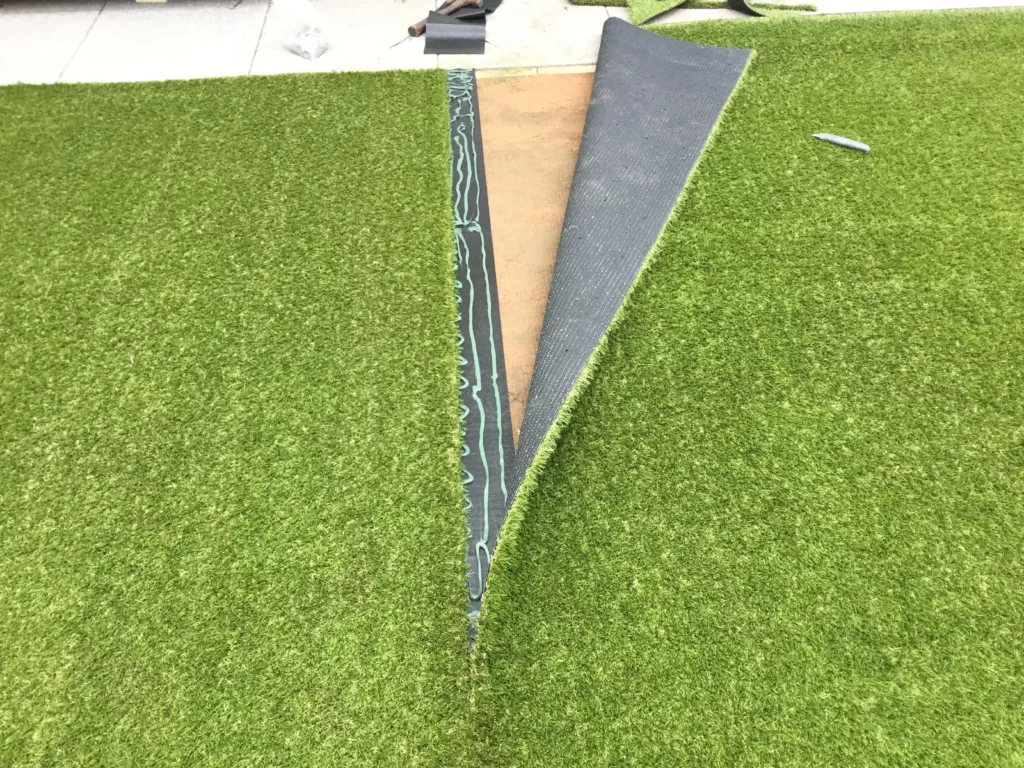
Secure the edges with staples and Spikes to ensure the turf doesn’t move from its place.

Wet the turf using a hose to settle the base material and ensure an even surface properly.

📌 Tips for Working with Artificial Turf:
Here are some helpful tips to ensure proper care and installation of artificial turf:
- Good base setup: ensure the ground is even and compact before you install the turf strips.
- Take proper measurements: take proper measurements of the turf and the ground on which it will be laid for a perfect fit.
- Shade the turf during Summers: artificial turfs absorb and retain heat, so ensure it is shaded well in summer to prevent excess heat absorption.
- Clean the turf Regularly: regularly clean it to remove dirt, prevent excess buildup and maintain its looks.
- Professional installation: Make sure to hire experienced professionals for a smooth installation of your synthetic turfs.
- Secure edges and join turf strips firmly: take care that the turf strips are well taped with each other and the edges are firmly held to the base with spikes and staples.
- Proper drainage: the base and sub-base layers must be designed carefully for proper water drainage to prevent its accumulation.
- Brushing the turf: Brush and groom the turf regularly to maintain its appearance and keep the turf fibres from clumping together over time.
- Weeding: install a weed barrier between the ground and your turf to prevent their growth through it.
- Removing stains: in case turf is stained, use mild soap and water or recommend cleansing chemicals by professionals.
- Controlling odour: If you encounter weird smells from your turf, use an artificial turf deodorizer, or you can also go with a mixture of water and vinegar to remove the smell.
- Annual Maintenance: consider hiring a professional on an annual basis to perform the maintenance works of your turf like deep cleansing, brushing and grooming, deodorizing and addressing other issues.
✅ Conclusion
Artificial turf is a low-maintenance replacement for natural grass made of synthetic materials, including nylon, polyethylene, and polypropylene. Due to advantages including ease of Maintenance, toughness, water saving, and year-round attractiveness, its popularity has increased.
Despite benefits, issues with manufacturing energy, heat retention, and disposal lead to environmental problems. Artificial grass installation takes the proper planning and equipment and is frequently utilized in homes, businesses, and sports grounds.
Accurate measurements, shade in hot weather, and routine cleaning are necessary for proper maintenance and optimum performance.
